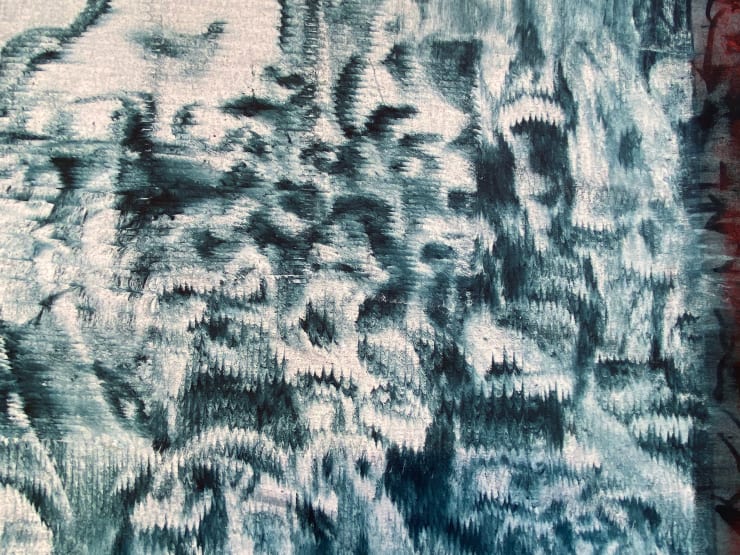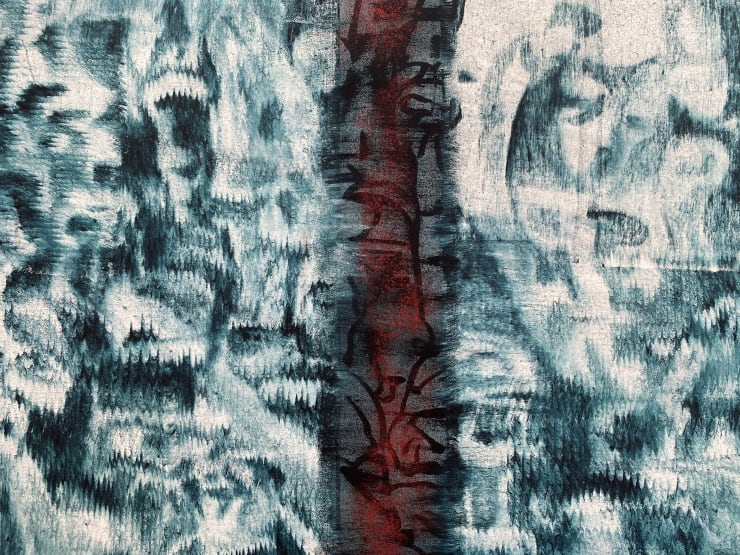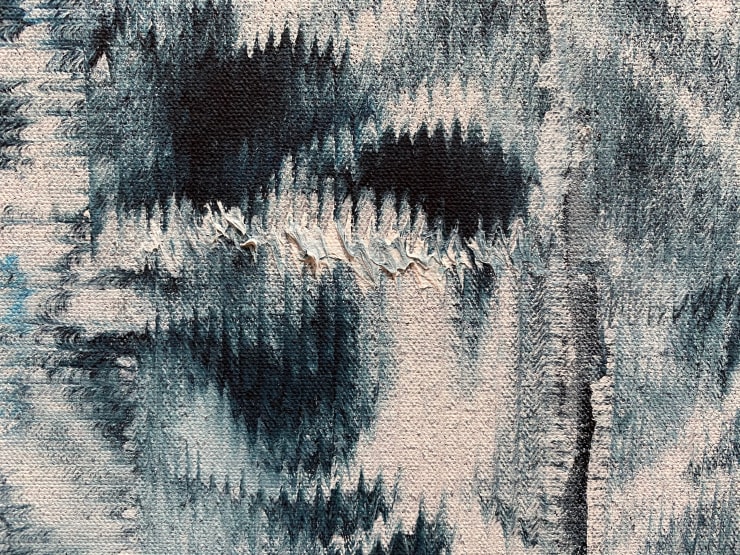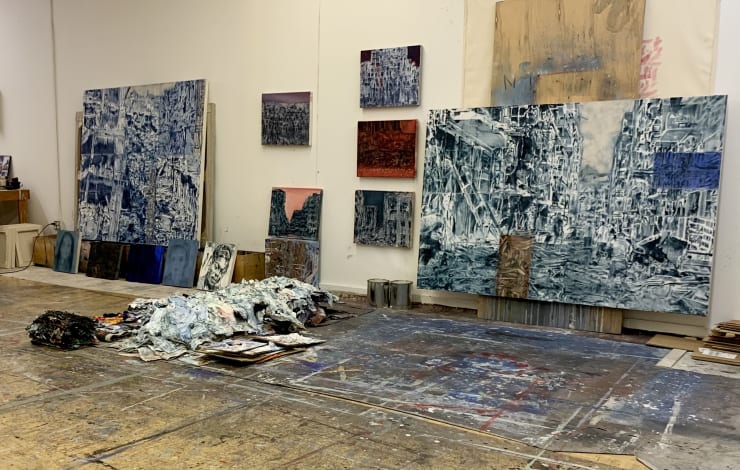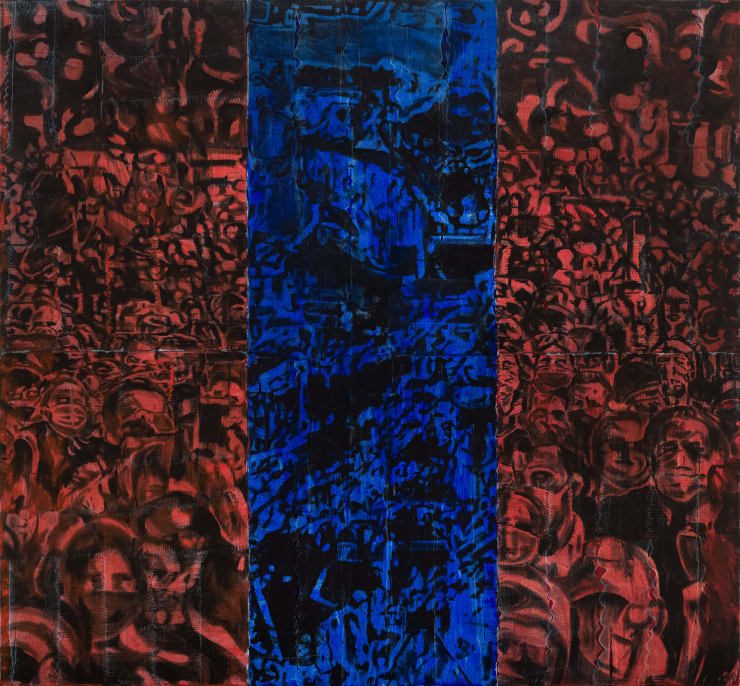-

May 25, 2020
May 25th was a Monday and the end of the long Memorial Day weekend in the United States. It was also the day that George Floyd died, after four officers arrested him and one, Derek Chauvin, knelt on his neck for 8 minutes and 46 seconds.
Floyd's death prompted a surge of protests and rallies across the globe to defend Black lives. One such protest is captured in Jorge Tacla's oil and cold wax painting, May 25, 2020.
-

-
The painting shows a group of protestors gathered with fists outstretched. It pulses with an energy underscored by Tacla's all-over composition and striking diagonal lines. There are many different scenes visible at any given protest, but Tacla's focus is the crowd. This is the story of many individuals coming together as one to state their demands.
-
A red line runs down the canvas dividing it in two. On both sides, the artist has mixed oil paint and cold wax to create a rich surface of texture and corporeality. Tacla often creates incisions in his paintings and leaves parts of the canvas exposed to mirror the tension of his subjects. He compares the paint and wax on the surface to a skin. In May 25, 2020, the "seams" suggest not only cuts in this skin, but also the entrenched polarity of the United States. The pieces have pulled so far apart as to be strained at the edges--any further and they might rip in half.
-
 Photograph by Etienne Frossard"This is our contemporary history. I have a duty to respond to it." -Jorge Tacla
Photograph by Etienne Frossard"This is our contemporary history. I have a duty to respond to it." -Jorge Tacla -
A History of Protest
Jorge Tacla's personal history has given him a unique perspective on how quickly power can shift hands. Although born in Santiago, his grandparents immigrated to Chile around 1910 from Syria and Palestine to escape oppression and political turmoil. As a teenager, he came of age in Chile during the rise of the Communist party, youth-led popular protests and the U.S.-assisted overthrow of Salvador Allende's government, followed by Pinochet's dictatorship. Tacla moved to downtown Manhattan in 1981, just as the Wall Street boom was taking off. He was also in New York City in 2001, when the North and South towers of the World Trade Center fell due to terrorist attacks by Al-Qaeda.
-

-
In Context
Additional Protest Paintings by Jorge Tacla
Paintings as Protest
Past viewing_room


